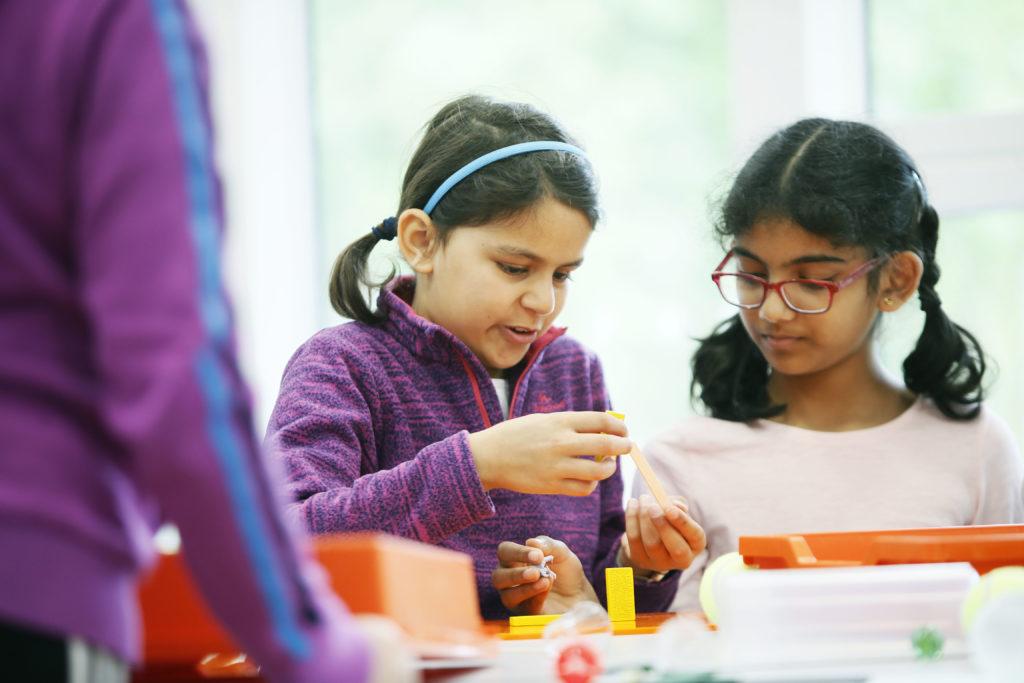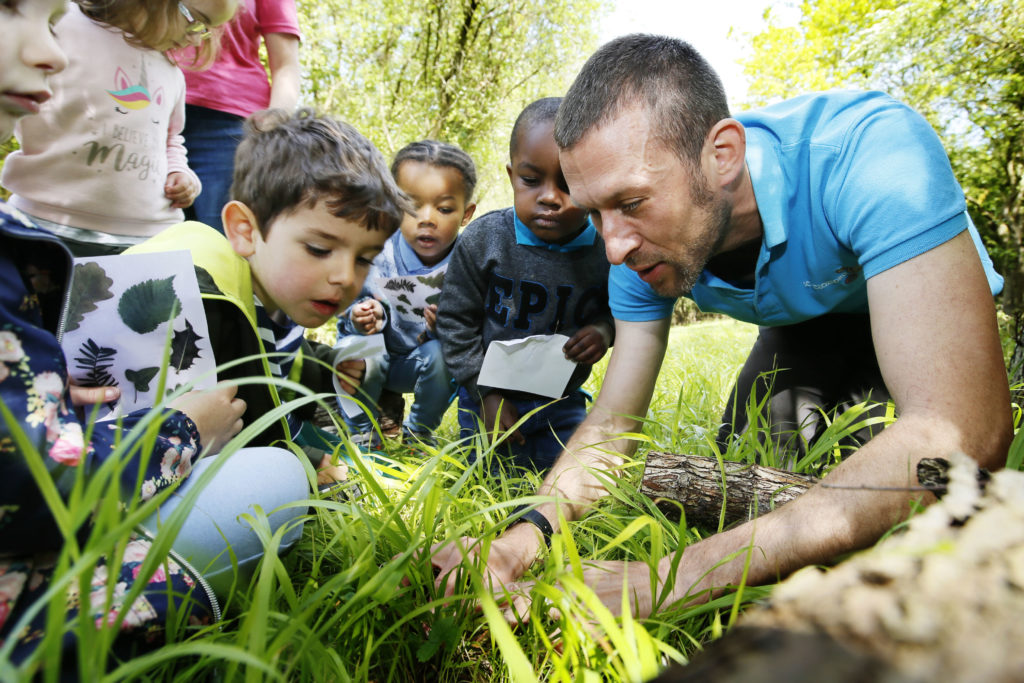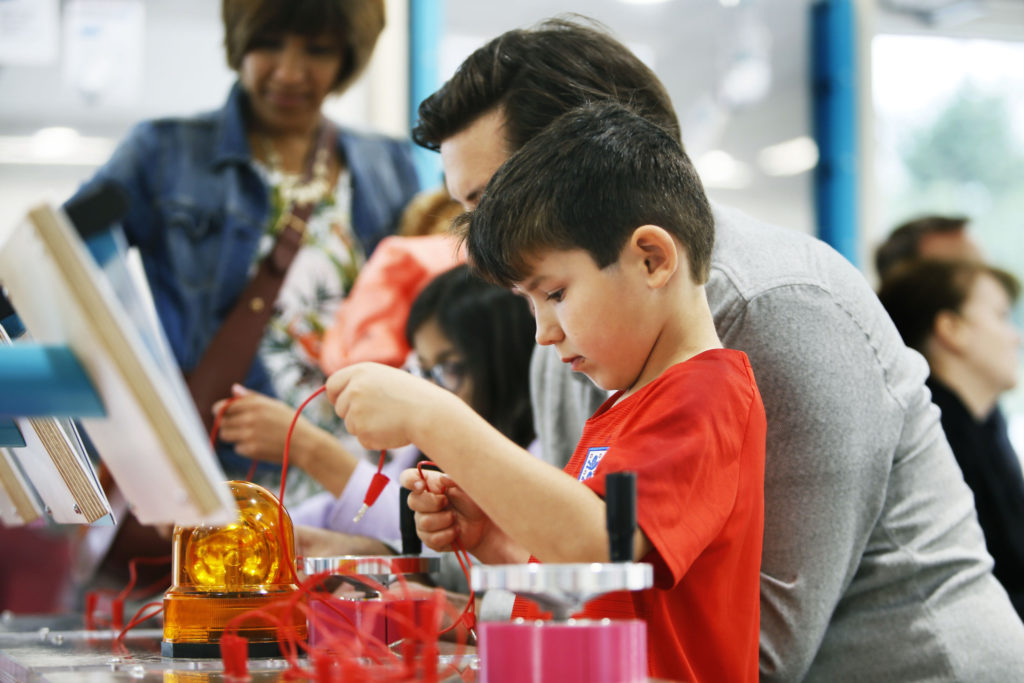
The ‘Science Capital in Practice’ programme felt like a perfect fit for us as at this time as we were already beginning to think about how we could utilise the science capital research in our work. This month we began our grant with a training day for the Science Oxford Education and Engagement team.
As an organisation, our education and engagement work is based on the ethos of our ‘Thinking, Doing, Talking Science’ (TDTS) CPD programme for primary teachers. TDTS is about optimising opportunities for higher order thinking in science through more discussion (talking) and more creative and challenging practical activities (doing). TDTS has been running for the last 7 years and, via two significant Randomised Controlled Trials, has been found to make a significant positive difference to pupil interest and self-efficacy in science, both of which are aspects of science capital.
TDTS now underpins all our education and engagement programmes and provided the foundations for the creation of our new Science Oxford Centre. During our training session we used TDTS as a starting point for our discussions, sharing examples of how we all currently put this into practice and how these examples address dimensions of science capital.

Following our discussions, we tried viewing our examples through two ‘science capital lenses’ to explore the overlap in these different perspectives of best practice. We used two engagement tools discussed at the Science Capital in Practice Training Academy, the King’s College London/University College London ‘Science Capital Teaching Approach’ three pillars model and the Science Museum Group nine ‘science engagement reflection points’.
The first tool we used was the three pillars model, with the foundation of ‘broadening what counts’. Much of the way in which we, as a team, encourage, elicit and facilitate discussion in science overlaps well with this approach. However, as informal science learning providers, we found this structure, understandably, to be too specific to secondary teaching to be fully useful to us as a way of reviewing and developing what we do with our wide range of audiences.
The second tool we used was the nine ‘science engagement reflection points’. This worked really well and generated lots of interesting and valuable discussion about our existing best practice as well as the tweaks we can continue to make to improve it so that the nature of the experiences we provide, and the way they are connected, can help to develop science capital.

After lunch we moved on to specific action planning. One group focussed on progressing the next steps for our ‘Science Capital in Practice’ project – a series of visits to the Science Oxford Centre and woodland for pupils from local schools who are in receipt of Free School Meals, accompanied by the development of activities for them to try in other parts of their lives. This project will finish with a special day where the pupils take the lead, showing the centre to their own families, sharing what they have created and achieved and showing how they have utilised and developed their skills.
Another group focussed on the next stages of our ‘Explore Your Universe 4 programme‘ which is also focussed on developing the science capital of young people – this time with youth groups in Banbury. A third group looked at our ‘STEM World of Work’ programme for teenagers and discussed how we could develop our procedures, employer support and content to better serve the development of science capital.
Before the end of the day, every member of the team committed to a personal pledge, with a deadline, of an action that they intended to complete. These actions aligned with improving their practice for the development of science capital. The ideas were really creative and varied, and included:
- Reviewing the language we use on our ‘STEM Placements’ student application form
- Exploring primary teachers’ own attitudes to science at the start of our popular twilight CPD sessions as part of considering the different science influences on pupils
- Having a board up in our hands-on Exploration Zone at the Science Oxford Centre that introduces the staff on that day
- Planning a range of accessible and open ‘higher order thinking’ questions to pose in our regular Saturday Clubs and developing more ‘hands down’ techniques when soliciting children’s responses
- Enabling more reflective practice by giving team members more time to watch each other in action
- Thinking about how we categorise events and evaluate our adult programme, with a stronger focus on intended audiences and factors which are known to correlate with lower or higher science capital
- Setting up and regularly using social media hashtags to engage families, with careful language and recognising a broad base of skills
Our ‘Science Capital in Practice’ series shares updates on the progress of organisations involved in the programme, a collaboration between the Science Museum Group and the UK Association for Science and Discovery Centres.